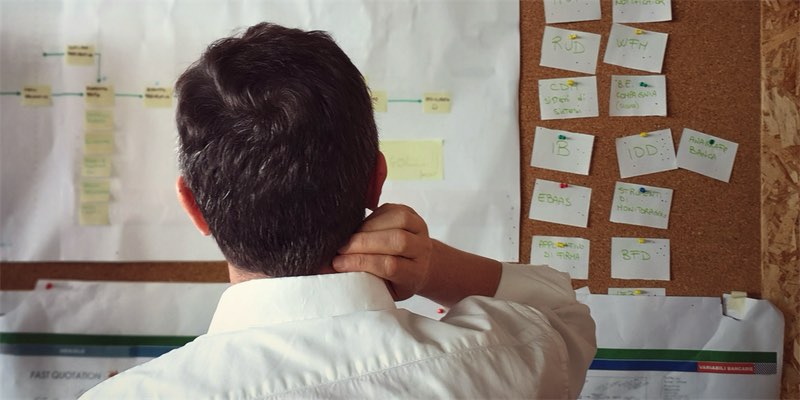We’ve all been there, sitting in a presentation or speech, struggling to keep our eyes open as the presenter drones on. Maybe the content is interesting, but the delivery is lacklustre. Or maybe the delivery is fantastic, but the content is disorganised or hard to follow. Whatever the reason, there’s no denying that effective presentation skills are critical to captivating and inspiring your audience.
So, whether you’re a seasoned speaker or a novice presenter, it’s always a good idea to brush up on your skills. That’s why in this blog post, we’ll be covering seven effective presentation skills that are sure to wow your audience. From knowing your audience to engaging with them, these skills will help you deliver powerful presentations that leave a lasting impact.
So, let’s dive in and explore these seven effective presentation skills that will take your speaking abilities to the next level. And to help you hone these skills, we’d like to introduce you to our specialised effective presentation skills training programs.
Skill 1: Knowing Your Audience
One of the most effective presentation skills is knowing your audience. Understanding your audience helps you tailor your presentation to their needs, interests, and expectations.
Knowing your audience allows you to focus on the topics that are most relevant to them and speak in a language they can understand. Failure to know your audience can lead to a disengaged and uninterested audience, which can ultimately derail your presentation.
Tips for Identifying and Understanding Your Audience
When it comes to delivering a presentation, understanding your audience is essential. Identifying their needs, interests, and expectations can help you tailor your presentation to keep them engaged and interested throughout. Here are some tips to help you better identify and understand your audience:
1. Research your audience
Before your presentation, research your audience to understand their demographics, interests, and expectations. This can be done through social media, surveys, or by asking the event organisers for details about the attendees.
2. Ask questions
During your presentation, ask questions that engage the audience and help you understand their needs and interests. This can help you tailor your presentation to meet their expectations.
3. Analyse non-verbal cues
Pay attention to non-verbal cues, such as facial expressions and body language. This can help you gauge the audience's level of engagement and adjust your presentation accordingly.
4. Consider the occasion
The type of event can affect the expectations of your audience. If you're presenting at a formal event, your audience may expect a more polished and structured presentation. On the other hand, if you're presenting at a more casual event, your audience may appreciate a more relaxed and conversational tone.
5. Use social media
Social media can be a great tool for understanding your audience. Look for groups or hashtags related to your topic to see what people are saying about it. You can also use social media to ask questions and get feedback from your audience.
Skill 2: Storytelling
Storytelling is a powerful tool that can make your presentation stand out from the rest. It can help you engage your audience emotionally and make your message more memorable.
A well-crafted story can take your audience on a journey, creating a connection between you and them. In a world where attention spans are short, storytelling can be an effective way to hold the attention of your audience and keep them engaged.
Tips for crafting a compelling story for your presentation
Crafting a compelling story for your presentation takes some effort, but the result can be powerful. Here are some tips to help you create a story that resonates with your audience:
1. Start with a clear message
Before you begin crafting your story, identify the key message you want to convey. This will help you structure your story around the central idea and ensure that it aligns with your overall goal.
2. Use a simple structure
A simple structure can help you keep your story focused and easy to follow. Consider using a traditional story arc, which includes an introduction, rising action, climax, falling action, and resolution.
3. Create relatable characters
Characters are an important part of any story. Create characters that your audience can relate to, and make them feel human and believable. This will help your audience connect with your story on an emotional level.
4. Use sensory language
Sensory language can help bring your story to life. Use descriptive words to paint a picture in the minds of your audience. This can help them better understand and remember your story.
5. Incorporate humour
Humour can be an effective way to engage your audience and create a memorable presentation. However, be sure to use humour that is appropriate, relevant and not sexist, ageist or ableist.
Skill 3: Visual Aids
Visual aids can be a powerful tool to enhance your presentation and improve its effectiveness. They can help you convey complex information in an easy-to-understand way and make your presentation more engaging and memorable.
The human brain processes visual information much faster than text, so incorporating visual aids in your presentation can help your audience understand your message more quickly and effectively.
Tips for creating effective visual aids
Now that we've covered the importance of visual aids, here are some tips for effective presentation skills:
1. Keep it simple
Visual aids should be simple and easy to understand. Avoid cluttered or complicated images, and use clear and concise language. Your audience should be able to quickly and easily understand the information you are presenting.
2. Use high-quality images
Low-quality images can be distracting and detract from your message. Use high-quality images that are relevant to your message and enhance the overall tone of your presentation.
3. Avoid too much text
Visual aids should be used to support your message, not replace them. Avoid using too much text on your slides or graphs, and instead, use bullet points or brief phrases to convey your message.
4. Use colour strategically
Colour can be a powerful tool to help emphasise important information, but it should be used strategically. Avoid using too many colours or bright colours that can be distracting.
5. Incorporate multimedia
Videos and audio can be effective tools to help engage your audience and make your presentation more interactive. Just be sure to use multimedia that is relevant to your message and supports the overall tone of your presentation.
Skill 4: Body Language
Body language is a critical aspect of effective communication skills for presentation, especially in a presentation setting. The way you use your body can have a significant impact on how your message is received by your audience.
Your body language can convey confidence, interest, enthusiasm, and many other emotions and attitudes that can affect how your audience perceives you and your message.
Tips for using effective body language
Here are some tips for effective presentation skills:
1. Stand up straight
Good posture is key to projecting confidence and authority. Stand up straight with your shoulders back and your feet shoulder-width apart.
2. Make eye contact
Eye contact is a powerful way to connect with your audience and build trust. Try to make eye contact with different members of your audience throughout your presentation.
3. Use hand gestures
Appropriate hand gestures can help emphasise your message and make your presentation more engaging. However, be careful not to overdo it or use gestures that are distracting or inappropriate.
4. Avoid fidgeting
Fidgeting can be distracting and convey nervousness or anxiety. Try to stand still and avoid pacing, tapping your feet, or playing with objects.
5. Use facial expressions
Your facial expressions can convey a wide range of emotions and attitudes, from enthusiasm and interest to boredom and disengagement. Use appropriate facial expressions to match the tone of your message.
Skill 5: Voice and Tone
The way you use your voice can have a significant impact on how your presentation is perceived by your audience.
Your voice and tone can convey a range of emotions and attitudes, such as confidence, authority, enthusiasm, and interest. Your tone can also indicate the level of importance or urgency of your message.
Tips for using effective voice and tone
Now that we understand the impact that voice and tone can have on a presentation, let's explore some tips for effective presentation skills:
1. Practice speaking with intention
Before your presentation, take some time to practice your speaking with intention. Think about the key messages you want to convey and how you want your audience to feel while listening to your presentation. This will help you deliver your message with a clear and purposeful voice and tone.
2. Vary your pace
Varying your pace can help keep your audience engaged and interested in your presentation. Slow down during important or complex points, and speed up during lighter or more exciting parts. By varying your pace, you can also create a sense of urgency or importance in your message.
3. Use pitch to convey emotion
Varying the pitch of your voice can help convey different emotions and attitudes in your presentation. For example, a higher pitch can convey excitement, while a lower pitch can convey seriousness or importance.
4. Pay attention to your volume
Be sure to project your voice so that everyone in the room can hear you. However, be careful not to speak too loudly, which can be distracting or overwhelming for your audience.
5. Pause for emphasis
Pausing at strategic moments can help emphasise important points and give your audience time to process your message. Take a breath and pause before making an important point to give it more weight.
Skill 6: Engaging Your Audience
One of the most important aspects of giving a presentation is engaging your audience. Without audience engagement, your presentation can quickly become boring, forgettable, or even frustrating for your listeners. Engaging your audience is a crucial skill that can help you build rapport, gain trust, and effectively communicate your message through your communication skills for presentation.
Tips for engaging your audience throughout your presentation
Engaging your audience is a crucial skill that can help you build rapport, gain trust, and effectively communicate your message using your communication skills for presentation. In this section, we will explore some tips for effective presentation skills.
1. Use storytelling
Storytelling is a powerful tool that can help you capture your audience's attention and keep them engaged. Use personal stories, anecdotes, or case studies to illustrate your points and make your presentation more relatable.
2. Ask questions
Asking questions can help you create a dialogue with your audience and make them feel like they are part of the conversation. Use open-ended questions to encourage participation and discussion.
3. Use humour
Appropriate humour can help lighten the mood and create a sense of rapport with your audience. Use jokes, puns, or funny anecdotes to break up the monotony of your presentation and keep your audience engaged.
4. Use visual aids
Visual aids, such as graphs, charts, or videos, can help illustrate your points and make your presentation more dynamic. Use them strategically to support your message and keep your audience engaged.
5. Use audience participation
Incorporating interactive elements, such as polls, quizzes, or games, can help keep your audience engaged and create a sense of excitement or competition. Use them strategically to break up your presentation and keep your audience engaged.
Skill 7: Handling Questions and Feedback
Handling questions and feedback is a critical skill that can make or break a presentation. It provides an opportunity to demonstrate your knowledge, address any concerns, and show your audience that you value their input.
Tips for handling questions and feedback effectively
Handling questions and feedback can be daunting, but with some practice, it can become an opportunity to showcase your expertise and engage with your audience. Here are some tips on how to handle questions and feedback effectively:
1. Listen carefully
Listen carefully to the question or feedback, and take a moment to think about your response. This shows that you respect the person asking the question and value their input.
2. Repeat or rephrase the question
This ensures that you have understood the question correctly, and it also helps the audience hear the question clearly. Rephrasing the question can also help clarify any misunderstandings or confusion.
3. Be concise
Keep your answers concise and to the point. Avoid giving long-winded answers that might confuse or bore the audience.
4. Use real-life examples
Using examples or stories can help illustrate your points and make them more relatable to the audience. It can also help keep the audience engaged.
5. Be honest
If you don't know the answer to a question, it's okay to say so. You can offer to follow up with the person after the presentation or suggest resources where they can find more information.
Wrapping It Up
In conclusion, effective presentation skills are an essential part of being a successful communicator. Knowing your audience, storytelling, using visual aids, body language, voice, and tone, engaging your audience, and handling questions and feedback are all key skills that can help you deliver a powerful and impactful presentation.
By following the tips and strategies we've shared, you can improve your communication skills for presentation and leave a lasting impression on your audience. And if you're looking to take your skills to the next level, some.Education provides presentation skills training that can help you develop and hone these skills.
Remember, a great presentation isn't just about the content - it's also about the delivery. By mastering these skills, you can engage your audience, build your credibility, and leave a lasting impression. So go out there and wow your audience!
Useful Resources: 10 importance of speech communication | Communication skills presentation | Grapevine communication




















